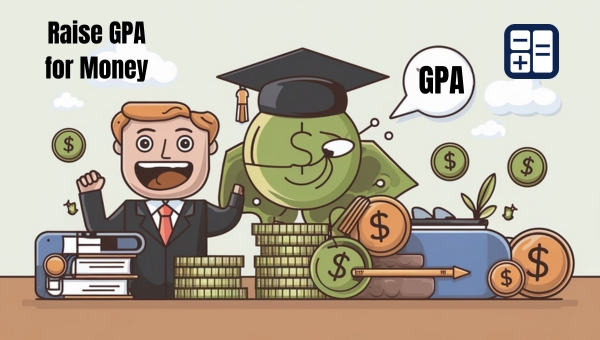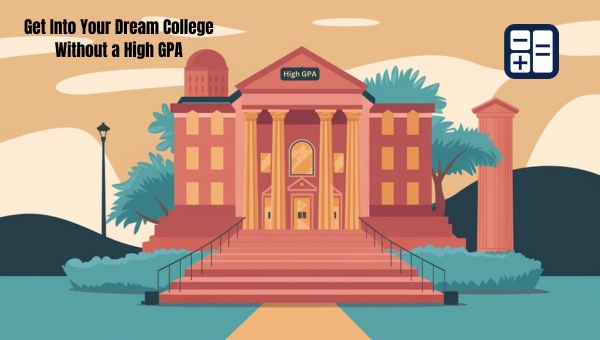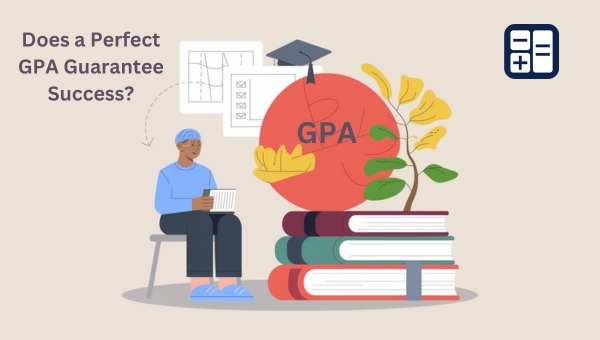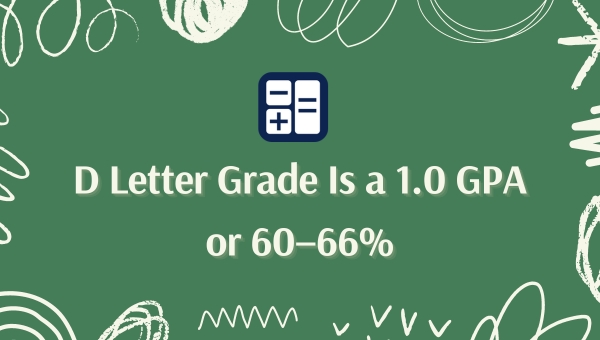3.6 GPA Equals to 90-92% Percentile Grade or A
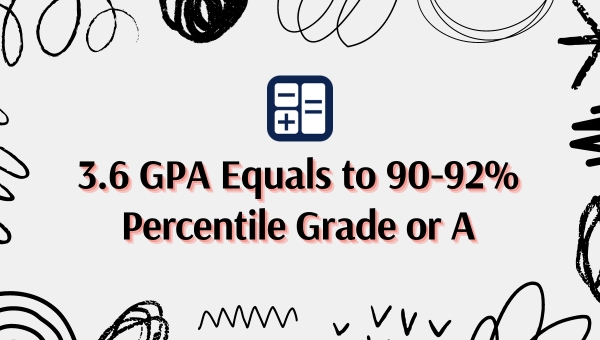
You might wonder what a 3.6 GPA really signifies beyond just a number on your report card. Translating to a 90-92% percentile grade, it reflects a consistent combination of A’s and B’s. But how does this measure up in the eyes of colleges and employers?
More importantly, what strategies can you adopt to either achieve or improve this GPA efficiently? Understanding the impact and the methods to reach this benchmark could be pivotal for your academic and professional future.
What is a 3.6 GPA?
A 3.6 GPA is considered a strong academic performance, typically indicating that you’ve been earning a mix of A’s and B’s in your courses. This GPA reflects your dedication and consistency in maintaining good grades across different subjects.
A 3.6 GPA is often seen as a solid indicator of your academic capabilities, suggesting that you have a strong understanding of the material and can perform well under various academic pressures.
When you have a 3.6 GPA, it generally translates to an average percentage grade of around 90-92%. This percentile range shows that you’re performing better than many of your peers, placing you in a favorable position when being compared academically.
Colleges and employers often look favorably upon a 3.6 GPA because it demonstrates not only your academic proficiency but also your work ethic and ability to manage your time effectively.
It’s important to recognize that maintaining a 3.6 GPA requires consistent effort and dedication. You need to stay focused, complete assignments on time, and prepare thoroughly for exams.
This GPA can open doors to various opportunities, reflecting well on your academic record and showing that you’re capable of handling challenging coursework.
What does a 3.6 GPA mean for high school students?
A 3.6 GPA puts you in a strong position when considering your college options.
You can confidently apply to safety schools, have a good shot at target schools, and even consider some dream schools.
It’s important to balance your applications to maximize your chances of acceptance.
Safety Schools
For high school students, a 3.6 GPA can open doors to a range of safety schools where admission is more likely.
Safety schools are colleges and universities where your GPA and test scores are above the average admitted student. They provide a sense of security in the college application process because you’re more likely to get accepted.
To identify potential safety schools, consider the following steps:
- Research Admission Statistics: Look up the average GPA and test scores of admitted students at various colleges. Aim for schools where your 3.6 GPA is higher than the average.
- Visit College Websites: College websites often provide detailed admission criteria. Compare your academic profile with what’s listed to see if you’re a strong candidate.
- Consult with Your Guidance Counselor: They can offer personalized advice based on your academic record and preferences, helping you pinpoint schools where your chances of acceptance are high.
Target Schools
Frequently, a 3.6 GPA places high school students in a competitive position when applying to target schools. This GPA reflects strong academic performance and dedication, which many colleges value.
A 3.6 GPA, often equivalent to a 90-92% percentile grade, can open doors to several reputable institutions where you’ll find a good balance between acceptance rates and academic rigor.
When considering target schools for your application, keep in mind the following:
- Research their average GPA: Many target schools have an average admitted GPA around 3.5 to 3.7. Knowing this helps you gauge where you stand in comparison to other applicants.
- Highlight your strengths: Besides GPA, schools look for extracurricular activities, leadership roles, and unique talents. Emphasize these in your application to stand out.
- Craft a compelling essay: A well-written, authentic personal statement can significantly impact your application. Use this opportunity to showcase your personality, experiences, and aspirations.
Dream Schools
Navigating the path to dream schools with a 3.6 GPA can be both exhilarating and challenging. Your GPA indicates consistent performance, but it’s crucial to understand how it fits into the competitive landscape of top-tier colleges.
A 3.6 GPA, often seen as an A- average, places you in a good position, though it mightn’t be at the very top of the applicant pool for elite institutions.
To maximize your chances, follow these steps:
- Strengthen Your Application: Highlight unique aspects of your profile. Exceptional essays, strong letters of recommendation, and a robust list of extracurricular activities can make a significant difference. Show colleges who you’re beyond your GPA.
- Strategically Select Schools: Balance your applications between reach, match, and safety schools. Research institutions where your GPA aligns with the middle 50% of accepted students, and ensure you apply to a few dream schools while keeping realistic options in mind.
- Improve Standardized Test Scores: Excelling in SAT or ACT tests can complement your GPA. High scores can offset a slightly lower GPA and demonstrate your academic capabilities. Prepare thoroughly and consider retaking the test if necessary.
Proven Tips to Get a 3.6 GPA
To achieve a 3.6 GPA, you’ll need to master time management techniques and adopt effective study habits.
Make the most of campus resources and build strong relationships with your teachers and peers.
Don’t forget to prioritize your mental health to maintain a balanced and productive academic life.
Time Management Techniques
Achieving a stellar GPA, like a 3.6, often hinges on mastering time management techniques that maximize productivity and reduce stress.
Start by creating a detailed weekly schedule. Allocate specific time blocks for classes, study sessions, and leisure activities. This way, you’ll know exactly when and where to focus your energy.
Prioritize tasks using the Eisenhower Matrix. Categorize tasks into four quadrants: urgent and important, important but not urgent, urgent but not important, and neither. Tackle the urgent and important tasks first to ensure you’re not scrambling at the last minute.
Break larger assignments into manageable chunks. By dividing them into smaller tasks, you’ll find it easier to start and stay motivated. Use tools like to-do lists and apps to keep track of deadlines and milestones.
Don’t forget to schedule short breaks. Studies show that taking regular breaks can boost concentration and productivity. Try the Pomodoro Technique: work for 25 minutes, then take a 5-minute break.
Lastly, learn to say no. If you’re overwhelmed with extracurricular activities or social events, it’s okay to decline. Your primary focus should be on maintaining a balanced schedule that supports your academic goals.
Effective Study Habits
Earning a solid GPA like a 3.6 demands more than just attending classes—it requires effective study habits that optimize your learning. Start by creating a dedicated study schedule. Block out specific times each day for studying, ensuring consistency. Use a planner to keep track of assignments, exams, and deadlines.
Active learning is crucial. Don’t just passively read your textbook; engage with the material. Take notes, summarize chapters in your own words, and teach the content to someone else. These methods reinforce your understanding and retention.
Break your study sessions into manageable chunks. The Pomodoro Technique, which involves 25 minutes of focused study followed by a 5-minute break, can boost productivity and prevent burnout.
Stay organized. Keep your study space clutter-free and have all necessary materials on hand. Develop a system for organizing notes and coursework, so you can easily find information when needed.
Utilizing Campus Resources
Effective study habits form the backbone of academic success, but they aren’t the only tools at your disposal. To achieve a 3.6 GPA, you need to leverage the campus resources available to you.
Start by visiting the library. It’s not just a place for books; it’s a treasure trove of academic journals, study guides, and quiet study spaces. Utilize the reference librarians—they’re there to help you find the materials you need.
Next, make the most of your professors’ office hours. They can offer personalized guidance, clarify difficult concepts, and provide insights into what might be on the exams.
Don’t forget about teaching assistants (TAs) as well; they’re often more accessible and can offer additional support.
Peer study groups are another invaluable resource. Collaborating with classmates can expose you to different perspectives and problem-solving techniques. You might also find that teaching others reinforces your own understanding.
Building Strong Relationships
While academic performance is crucial, building strong relationships can significantly enhance your journey to a 3.6 GPA. Connect with your professors by attending office hours and engaging in class discussions. This rapport not only helps you understand the material better but also opens doors for mentorship and recommendation letters.
Form study groups with your peers. Collaborative learning allows you to gain different perspectives on the material, fill knowledge gaps, and stay motivated. It’s a win-win: you help each other out and reinforce your own understanding in the process.
Don’t overlook your academic advisors. They can provide valuable insights into course selection, time management, and balancing your academic load. Regular check-ins with them can keep you on track and help you navigate any challenges.
Building relationships isn’t limited to academics. Join clubs, organizations, or sports teams. These social interactions can reduce stress and give you a well-rounded college experience. Networking with alumni can also provide future career opportunities.
Prioritizing Mental Health
It’s essential to prioritize your mental health if you aim to achieve a 3.6 GPA. When you’re mentally well, you’re more focused, motivated, and productive.
Start by managing your stress effectively. Incorporate regular breaks into your study schedule to avoid burnout. Use techniques like deep-breathing exercises or mindfulness meditation to stay calm and centered.
Don’t compromise on sleep. Aim for 7-9 hours each night to keep your brain functioning at its best. Lack of sleep can severely impact your cognitive abilities and academic performance.
Stay organized. Use planners or digital tools to keep track of assignments, exams, and deadlines. This helps reduce anxiety and gives you a clear picture of what needs to be done.
Connect with supportive peers and mentors. Sharing your struggles and achievements with others can be incredibly relieving and motivating. If you’re feeling overwhelmed, don’t hesitate to seek help from a counselor or mental health professional.
Lastly, balance your academic life with physical activity. Regular exercise improves your mood and energy levels, which are crucial for maintaining a high GPA.
How to Raise Your GPA Fast?
Boosting your GPA quickly requires a strategic approach and focused effort. Start by evaluating where you stand academically. Identify courses where you can realistically improve your grades with the least amount of effort. Prioritize assignments and exams in those subjects to maximize your gains.
Next, effective time management is crucial. Create a study schedule that allocates specific times for each subject, focusing more on the challenging ones. Avoid cramming; instead, use short, consistent study sessions to enhance retention. Utilize tools like planners or apps to stay organized.
Seek help where needed. Don’t hesitate to ask your teachers for extra help or clarification on topics you find difficult. Join study groups where you can exchange knowledge and study strategies with peers. Sometimes, a different perspective can make a huge difference.
Make the most of available resources. Use online tutorials, academic papers, and educational videos to supplement your learning. Practice past exam papers to get a feel for the format and types of questions you might encounter.
Conclusion
Achieving a 3.6 GPA reflects your dedication and strong academic performance, which colleges and employers admire. By understanding what a 3.6 GPA means and following proven tips, you’re well on your way to maintaining or even boosting your GPA.
Stay committed, seek help when needed, and continuously challenge yourself. Remember, with the right strategies and mindset, you can excel academically and open doors to future opportunities. Keep pushing forward; you’ve got this!
